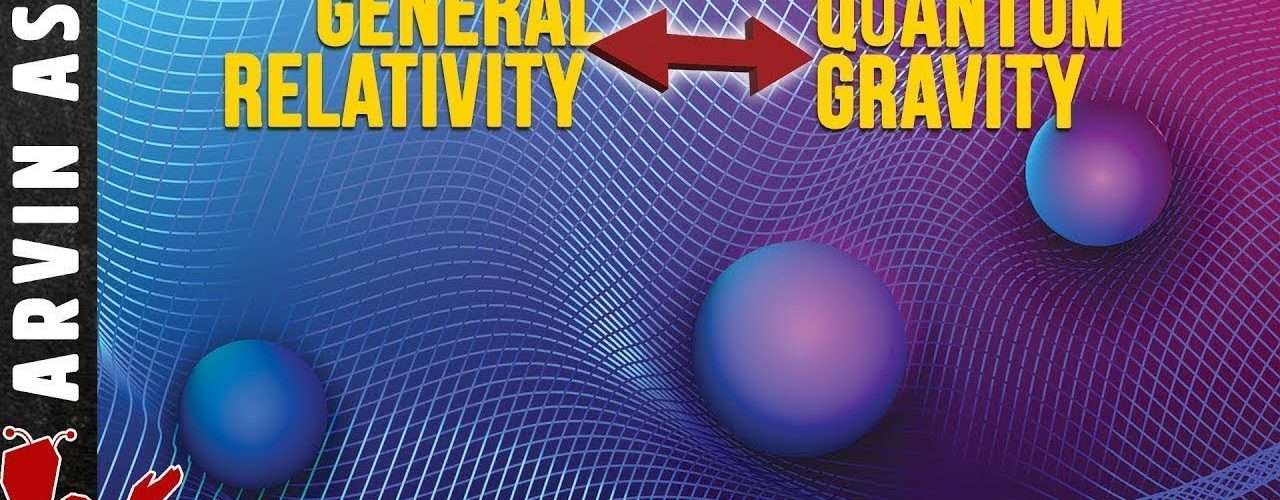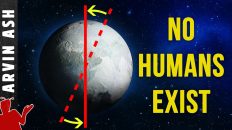In 1687, Isaac Newton changed the way we humans view the cosmos by connecting a force we experience on earth, with the force that controls the movement of heavenly bodies. That force of course was gravity.
And he expressed this analytically in a remarkable equation that is still used today. The law of universal gravitation.
This equation explained the movement of planets, and it remains very accurate even today under most circumstances.
But it had a few problems, one of which was the idea of action at a distance, that even Newton has trouble accepting. This was the idea that a massive object could exert a force instanteously to another massive object at a distance without ever touching it.
Later in 1859, Newton’s laws could not explain the the rate of precesssion of Mercury – the way its elliptical orbit rotates around the sun, and is not fixed.
Newton explained gravity as an innate property of objects – a constant instantaneous force that could act over long distances.
250 years later, in 1916, Einstein changed this paradigm with the publication of the General theory of relativity.
It solved the riddle of Mercury’s precession, and explained that gravity was not a mysterious force acting at a distance in the background of space and time, but was a result of a bending of the background itself – the curvature of space-time.
It was a new paradigm that could explain more things.
Today, a hundred years after Einstein’s publication, we find some holes in Einstein’s theory as well, such as its inability to explain the singularity inside black holes, and the big bang. One the biggest pursuits in physics is the attempt to find a better theory, a quantum theory of gravity.
In order to understand quantum gravity though, you have to first understand general relativity.
However, the mathematics of General relativity is so difficult that even a genius like Einstein, could not easily derive it. And there are still papers being written today on specific solutions to these equations.
I am going to try to explain those equations to you intuitively and visually, to give you an idea of what the math is trying to say. And that I hope this will help you better understand quantum gravity.
If we look at Newton’s equation for gravitation and Einstein’s equation of general relativity. We see a remarkable correlation. For one thing Newton’s gravitational constant is present in both equations
In Newton’s equation, we have a force on the left side, created by mass on the right side.
In Einstein’s equation, we have the analog of force – the curvature of space-time on the left side. It has two components that describe the curvature and how distances in the curvature are determined.
This is the analong of force described by Newton. I want to be careful here because…
in general relativity, gravity is not a force within the background of space and time like it is in Newton’s equation, but is a curvature of the space-time background itself.
In other words, gravity does not cause the curvature of space time, it is the curvature of space-time.
The right side of the general relativity equation tells us about mass-energy content. This is represented by something called the mass-energy-momentum tensor. It is a source of the curvature.
In the context of these equations think of a tensor as a multidimensional array of mathematical components.
This can be an array of vectors, scalars, or other tensors represented by an N x N matrix. A vector is a type of tensor represented by an N x 1 matrix.
In general relativity, the dimensions are 4, so the vectors are 4 x 1 and tensors are 4 x 4 matrices.
So this equation describes what John wheeler said so succinctly about general relativity: “ Space-time tells matter how to move, matter tells space time how to curve”
The right side is the matter and energy which tells space-time, on the left side, how to curve. In return, the left side – the curvature resulting in gravity, tells matter on the right side, how to move.
Essentially, what this equation shows is that matter and energy, results in a curvature of space-time which we perceive as gravity.
Although this looks like one somewhat simple equation. It is actually 10 equations, and is very complicated mathematically. If we wrote down all the 10 equations fully, it would take up more than one page of text. A simplified version is shown here.
It’s so complicated in fact, that Einstein was skeptical about being able to solve them. There are papers written to this day, on various solutions to these equations.
Let’s take a closer look at what these equations are trying to say. The equations describe curvature of space-time by treating it as being flat at infinitesimally small distances. So you can consider that general relativity behaves like special relativity at these small distances with no bending or curvature.
But overall curvature is taken into account. R(mu, nu) is the Ricci curvature tensor, it tells us how space-time is deviating from flat. It tells you how space-time curves at a given point.
The second term on the left side is composed of R, the scalar curvature. It tells you how much the space is changed at a point, such that you know how to correctly measure distances.
Little g (mu, nu) is the metric tensor. It tells you the geometry and structure of spacetime. Together this term defines how distances are calculated, given a curvature at a point.
Note that sometimes a third term is added, lambda times g (mu, nu). Lambda is the cosmological constant. This term describes the intrinsic energy density of the vacuum or empty space. It is the mathematical expression for what we observe as dark energy – the accelerating expansion of the universe. It would comprise energy in opposition to gravity. Lambda is a very small number about 1.1 x 10^-52 inverse m^2 – at small distances, the effect is negligible.
The right side has a constant which is equal to 8 pi G divided by the speed of light to the fourth power. G is Newton’s gravitational constant. But this whole term is sometimes referred to as the Einstein gravitational constant. It is really just a conversion factor to make sure we get the proper units.
On the right side – T is the stress energy momentum tensor, which tells us the density of energy and momentum at each point in space time. It is the source of the curvature.
The way these equations are formulated is by treating space-time in 4 dimensions. Three spatial dimensions, and one dimension of time. This is incorporated in the mu and nu subscripts. The value of mu and nu can be 0, 1, 2, or 3. The 0 subscript conventionally represents time, and the 1, 2, and 3 represent the three spatial dimensions.
This is why we have 10 equations. So for example if we draw a matrix of all the values that mu and nu could have, we can see that there are 16 possible combination. But this matrix is symmetrical so 0,1 for example is equivalent to 1,0. So if we take all the non-symmetrical combinations, we come up with 10 combination, hence 10 equations.
Draw a matrix, like this:
Let’s look at what some of these combinations mean. So for example, one equation is where mu and nu are zero and zero. Zero represents the dimension of time. What this would describe on the left side, is the speeding up or slowing down of time at a point in space. And the right side would describe the energy at that point.
Similarly, in another equation, the value of mu and nu can be zero and one. This would represent time in one direction and one spatial dimension in another. So the left side in this case represents the combination of the stretching of time within one spatial dimension. The right side, in this case would be the momentum or momentum density.
In another equation the value of mu and nu can be one and one. This would represent spatial dimensions for both mu and nu . In this case, the left side is describing the stretching of space in one of the dimensions. The right side, in this case would describe the pressure at a point in space. The same can be said if mu and nu are 2 and 2, or 3 and 3.
Here is a matrix of what the various combinations of mu and nu mean for the stress-energy tensor. Note that the combination of the curvature in two different spatial dimensions is called sheer stress.
Is general relativity true. Yes, in general. For example,
it predicts bending of light around massive objects. This has been observed for our sun as well as gravitational lensing around large clusters of galaxies.
It predicts that time will run more slowly on the surface of earth than a mountaintop – this has been confirmed with atomic clocks.
So why do we think that it is incorrect, or at least incomplete? The problem is that it does not fit with what is probably an even more accurate theory, and that is quantum mechanics.
There is no theory that describes how gravity works at quantum scales or even very small scales.
Nobel Laureate Steven Weinberg of Electro-weak theory fame, said that no one should take general relativity seriously for distances shorter than about 10^-35 meters.
So for example, lets take a simple hydrogen atom, which is composed of one electron and one proton. Quantum theory says that the electron is in a superposed state, meaning it is multiple positions and various distances from the nucleus as the SAME time. We only know the probability of finding it at particular radius, if we were to measure it.
Since the electron has mass, according to general relativity, it must curve space-time. But if it is in multiple locations at the same time, then the question is where is the curvature? Is it also at multiple locations at the same time?
We don’t know. There is nothing in general relativity akin to superposition like there is in quantum mechanics.
A second problem occurs in the case of black holes. General Relativity predicts matter and energy being compressed to an infinitely small point in space, with supposedly infinite curvature. But the theory breaks down here.
If you go back to our original equation of general relativity, it is easy to see why it breaks down. Since the equations treat space-time mathematically as being flat at infinitesimally small distances, and then calculate the overall curvature based on this presumption, a problem occurs when space is seemingly not flat at infinitesimally small distances.
This occurs at a singularity, since it is supposedly an infinitesimally small point, how do you calculate the space time curvature using flat space time with an infinitely curved point? It’s a hole in space time. The mathematics of general relativity seem to describe singularities this way,
…but mathematical infinities like this are usually wrong, so there’s probably something else going on there, that we haven’t figured out yet.
There are some other issues as well, when you try to integrate general relativity with quantum mechanics, such as the problem of information loss due to Hawking radiation.
The bottom line is we don’t really know how gravity behaves at quantum scales.
General relativity has been tested to scales of about 1/10th of a millimeter. At atomic scales and below, there is probably some better theory that will describe it.
The problem is that quantum mechanics works fine with space time curvature as the background.
The problem with the gravity is that it is not something that works with space time curvature as the background. It IS the space-time curvature. Space time curvature IS gravity.
Do we have anything that comes close to describing gravity at really small scales? There are two theories that seem to be promising, Loop Quantum Gravity and String theory.
And these will be the subject of my next video. So stay tuned, you won’t want to miss it.







